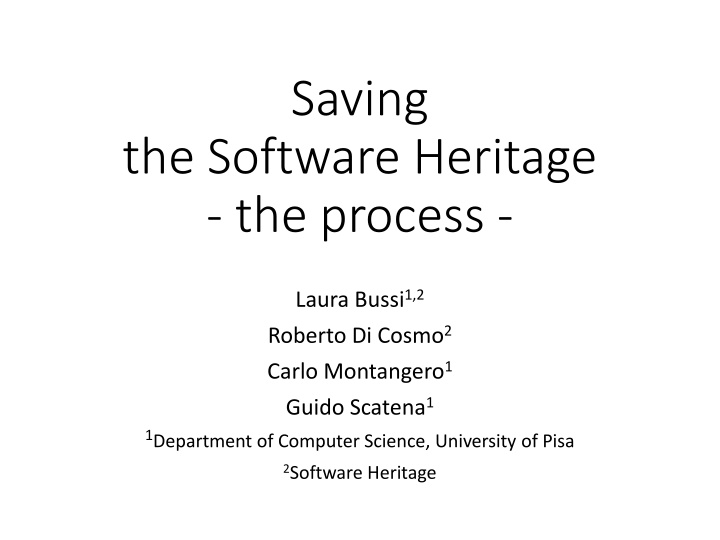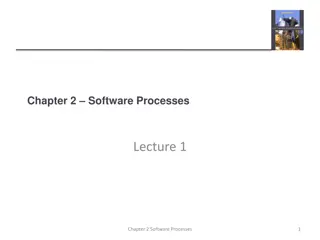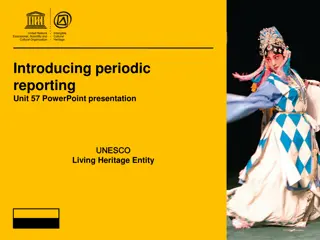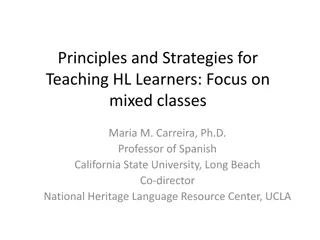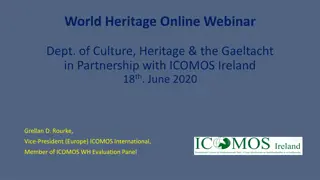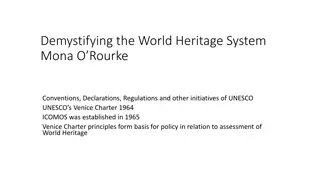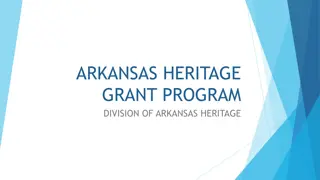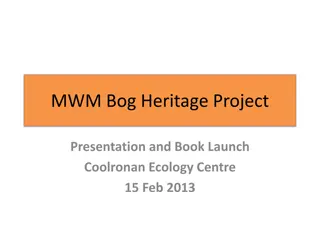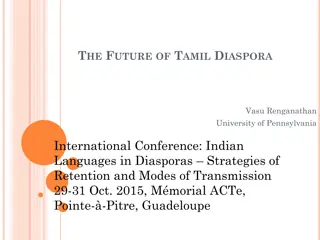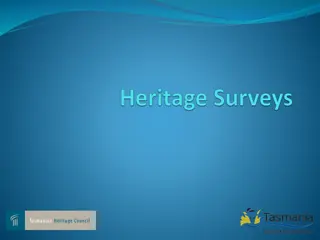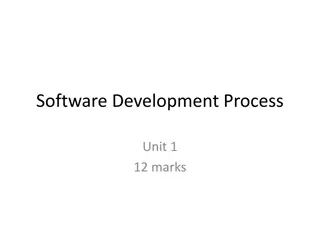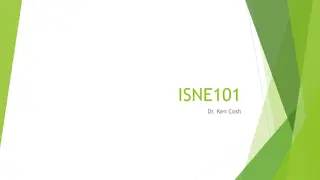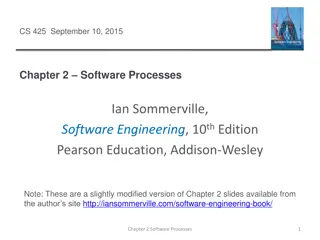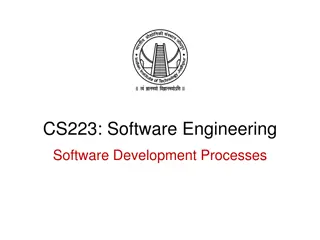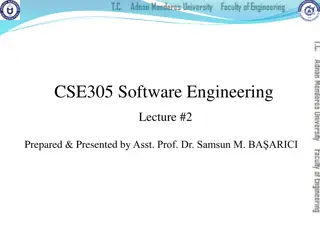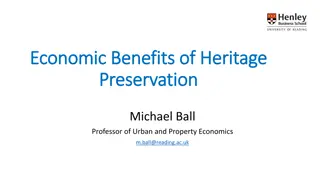Unraveling the Software Heritage: The Process and Challenges
Exploring the Software Heritage initiative and acquisition process framed within the larger history of software. Delving into the complexities of software history, sources, and the mission to preserve and share software source code in a comprehensive infrastructure.
Download Presentation

Please find below an Image/Link to download the presentation.
The content on the website is provided AS IS for your information and personal use only. It may not be sold, licensed, or shared on other websites without obtaining consent from the author.If you encounter any issues during the download, it is possible that the publisher has removed the file from their server.
You are allowed to download the files provided on this website for personal or commercial use, subject to the condition that they are used lawfully. All files are the property of their respective owners.
The content on the website is provided AS IS for your information and personal use only. It may not be sold, licensed, or shared on other websites without obtaining consent from the author.
E N D
Presentation Transcript
Saving the Software Heritage - the process - Laura Bussi1,2 Roberto Di Cosmo2 Carlo Montangero1 Guido Scatena1 1Department of Computer Science, University of Pisa 2Software Heritage
Roadmap Prologue SWH: The Software Heritage initiative SWHAP: The SWH Acquisition Process SWHAPPE: The SWHAP Pisa Enactor Epilogue October 28 HaPoC '19 - Bergamo 2
Roadmap Prologue where we frame our work in the larger picture of software history SWH: Software Heritage SWHAP: The SWH Acquisition Process SWHAPPE: Concrete support to the acquisition Epilogue October 28 HaPoC '19 - Bergamo 3
Which are the sources? Ideally [Mahoney, 2008]: running software "historians of technology must tinker with the things to discover the ideas which [ ] informed them" and historians of technology must "experience the software as users experienced it and hence analyze that experience critically". Actually, for legacy software: source code Hence, our work October 28 HaPoC '19 - Bergamo 4
Why is software history hard? "Just as ...the history of software begins with the history of what was done to understand how the practice (of that activity) was translated into a computational model." the design of software begins with an analysis of the activity to be automated... [Mahoney, 2008] October 28 HaPoC '19 - Bergamo 5
Recover first the version history October 28 HaPoC '19 - Bergamo 6
Roadmap Prologue The Software Heritage initiative Where we frame our work in its own context SWHAP: The SWH Acquisition Process SWHAPPE: Concrete support to the acquisition Epilogue October 28 HaPoC '19 - Bergamo 7
Software Heritage Mission: build an infrastructure to collect, preserve and share the source code of all available software on the long term Requirements: ensure Availability Open architecture, software, and collaboration Traceability Unique intrinsic identifiers, directly computed from the source code Uniformity access through the same uniform API/web interface October 28 HaPoC '19 - Bergamo 8
Dimensions of source recovery October 28 HaPoC '19 - Bergamo 9
Software Heritage, as of Oct. 2019 Harvested code 90,860,137 projects 6,317,723,261 source files 1,394,141,708 commits Infrastructure Main code repository at INRIA in Paris Mirror in ENEA in Bologna announced on Oct. 24 Partnership with UNESCO Sponsored by Intel, Microsoft, Google, GitHub, ... October 28 HaPoC '19 - Bergamo 10
Roadmap Prologue The context: Software Heritage SWHAP: The SWH Acquisition Process Where we sketch our proposal for software archaeology SWHAPPE: Concrete support to the acquisition Epilogue October 28 HaPoC '19 - Bergamo 11
A naf view of archeologists' work First, on site, they collect and identify the finds. Then, in the museum, they safely store, curate, and exhibit them. Often, they come back on site for a new campaign. October 28 HaPoC '19 - Bergamo 12
SWHAP: an overview October 28 HaPoC '19 - Bergamo 13
The deposited harvest, so far Softi, a small numerical exercise, CEP Fortran (1968) TAUmus, TAU2 controller, IBM Fortran (70's) CCM, customizable memory manager, C++ (1994) OrbFit, astronomy library, FORTRAN (current) October 28 HaPoC '19 - Bergamo 14
Roadmap Prologue The context: Software Heritage SWHAP: The SWH Acquisition Process SWHAPPE: Concrete support to the acquisition Where we talk about the SWHAP Pisa Enactor Epilogue October 28 HaPoC '19 - Bergamo 15
SWHAPPE: requirements Long term availability Historical accuracy Traceability Openness Interoperability October 28 HaPoC '19 - Bergamo 16
SWHAPPE: design choices The same tool all over the process to reduce the learning effort and to streamline the process Git as the revision control system, to manage the source code history Git supports traceability and historical accuracy, distinguishing between author and committer GitHub as the collaborative platform, to host the virtual stores and working areas to offer a web interface to access the saved information GitHub is archived in SWH, hence long term availability is guaranteed Both Git and GitHub are open Not the only choice, but very popular and active, and supported by Unipi October 28 HaPoC '19 - Bergamo 17
SWHAPPE in practice Infrastructure at https://github.com/Unipisa/SWHAP-TEMPLATE guide at https://github.com/SoftwareHeritage/swhapguide October 28 HaPoC '19 - Bergamo 18
SWHAP-SWHAPPE correspondence o Warehouse: in the MSC in Pisa o most similar to archeology, we need to learn o Virtual areas: repositories o In the Unipisa organization space on GitHub.com o For the acquisition of code XXX: o XXX-Depository, to save the original finds o XXX, to save the curated source for SWH o XXX-Workbench, to support the process activities October 28 HaPoC '19 - Bergamo 19
Some details: recovering the story For each version of the software ascertain the main contributing author, the exact date of the release of this particular version store these data in a dedicated metadata file version_history.csv October 28 HaPoC '19 - Bergamo 20
Some details: recording the story Either manually Committing the versions in the right order, Using the info in the .cvs file Or automatically Feeding the code and the .csv to DT2SG: Directory Tree to Synthetic Git a SWHAPPE tool developed by Guido S. In either case you get historical accuracy October 28 HaPoC '19 - Bergamo 21
October 28 HaPoC '19 - Bergamo 22
Roadmap Prologue The context: Software Heritage SWHAP: The SWH Acquisition Process SWHAPPE: Concrete support to the acquisition Epilogue Where we draw some conclusions, and look at some open issues for future work October 28 HaPoC '19 - Bergamo 23
Conclusions SWH: a cooperative venture to recover the past to preserve our heritage share the knowledge to prepare the future to guarantee scientific reproducibility to make research software more valuable to support research on software SWHAP: guidelines to this end SWHAPPE: a supporting infrastructure A new library of Alexandria of source code October 28 HaPoC '19 - Bergamo 24
Open issues In the short term: Increase the level of automation of the SWHAPPE support In the long term: Acquire and internalize the procedures to store the physical finds, like listings, etc. Acquire the means to streamline the transformation into digital form of the same Critical review of the process Porting of the process on other platforms => we are looking for cooperation and strategies to create a community October 28 HaPoC '19 - Bergamo 25
References M.S. Mahoney. What Makes the History of Software Hard and Why It Matters. Annals of the History of Computing 30,3 (2008). D. Spinellis. Unix History Repository. https://github.com/dspinellis/unix-history-repo (2017). UNESCO. Paris call - Software Source Code as Heritage for Sustainable Development. https://en.unesco.org/foss/paris -call-software-source-code (2018). Software Heritage. Home page. https://www.softwareheritage.org/ (2019). J.-F. Abramatic, R. Di Cosmo, S. Zacchiroli. Building the Universal Archive of Source Code. Comm. ACM (Oct. 2018). October 28 HaPoC '19 - Bergamo 26
Useful pointers The Software Heritage home page is at https://www.softwareheritage.org/ The SWHAP guide, call to contribution, and mailing list can be found at https://www.softwareheritage.org/swhap/ The SWHAPPE home page is at https://github.com/Unipisa/SWHAPPE The SWHAP acquisition catalogue is being updated at https://github.com/Unipisa/SWHAPPE October 28 HaPoC '19 - Bergamo 27
